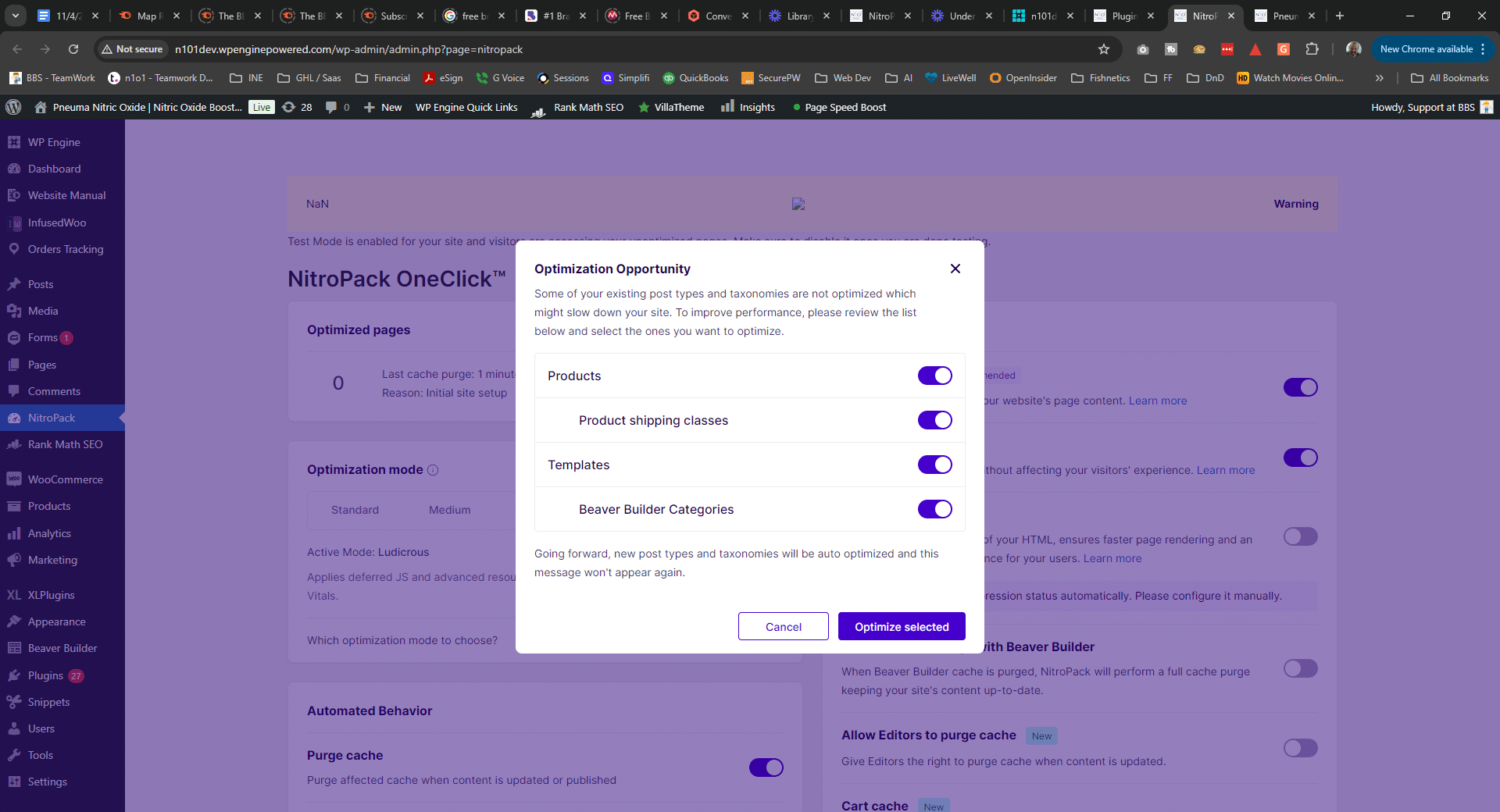Back when businesses were just starting to figure out the ins and outs of the Google algorithm, they learned about keyword optimization. They learned that if you want to rank for a specific keyword, you need to use it in a sentence. But what many people got wrong was that they started stuffing keywords into every sentence they could-sometimes even more than once-in the hopes that it would help their blog posts rank on Google. The problem with keyword stuffing though is that it does not allow them to read naturally and build a connection with its readers. It sounds like a robot and Google actually now penalizes you for it, which will hurt your SEO in the long run. The ideal keyword density percentage is not officially known, because like with all things relating to SEO, it likely changes from site to site. Have a solid keyword strategy but mostly just focus on writing good copy and creating content that your users would enjoy reading. If you have any questions about your SEO strategy or want us to handle it for you, reach out to us at Prebuilt Sites or The BBS Agency. We’d love to help you out!
Stuffing the Christmas turkey is a fun and delicious kind of stuffing. Stuffing keywords onto your website is neither fun nor delicious. Keyword stuffing is an SEO tactic from the dark ages of the internet, back at the turn of the century, which was used to game SEO results and page ranks with Google, Yahoo, and Alta Vista search engines. It is frowned upon now, and Google can even punish you if you try this Black Hat SEO practice.
Let’s help you define keyword stuffing, what it is and why it is bad for you. Then you can have some Christmas pudding.
Table of Contents [hide]
What is Keyword Stuffing?
Keyword Stuffing is the practice of including as many SEO keywords within the page copy as possible. It is used to manipulate page value as assigned by Google and to get a page ranked higher in SERP (Search Engine Results Page).
Web pages that are jam-packed full of keywords do not read naturally. Google’s crawl bots can pick this up, heck, even the people reading your content will pick it up and react negatively towards you. More often than not they’ll click away from your website and visit that of a competitor.
Keyword Stuffing, a brief history.
The practice of Keyword Stuffing began in the late 1990’s early 2000’s, in the era of Netscape and Yahoo search engines, when Google was just a baby.
The Big Three search engines- Yahoo, Alta Vista, and Google, relied heavily on keywords to rank a website based on search results. So people would fill their pages, the Meta tags, and other places, with keywords just to gain rank. It didn’t need to make sense or read well so long as they had the keywords on the page.
Web developers used a few different techniques to do this:
-
Invisible Text– matching the font colour to the background colour of the website.
-
Block Paragraphs– just paragraphs full of keywords.
-
Unnatural Repeating Words– where they would repeat the keyword in the web copy.
-
Meta Data Stuffing– cramming keywords into the text you’d see once you got a search result.
-
Spamdexing – including a lot of internal links within a paragraph or set of web copy text.
When Google began updating and releasing algorithms to identify and fight keyword stuffing, SEO experts had to find a way to gain page rank in other ways.
Keyword stuffing became an unpopular practice, labeled as ‘Black Hat SEO’, and was punishable by Google.
Keyword Stuffing Examples
Invisible text
This is the practice of matching the colour codes of the text with the colour of the website. This way the text appears invisible to the reader, but the Google crawl bots can still read it for ranking purposes.
Unnatural repeating of keywords.
This is where you repeatedly use the keyword in the web copy but it just doesn’t look natural or read well.
“If you want the best car service then you need to bring your car to Mike’s Mechanic for your car service. For the month of April he has a special on car service – a 25% discount on car service if you book before the end of April. So come to Mike’s Mechanic for your car service today. The best car service in the southern suburbs”
Can you tell what the keywords we used for the above example? How awful does it sound reading that copy? Yeah, we agree.
Spamdexing
This is a kind of Keyword Stuffing that is a little different. It is the overuse of internal linking within a document, and by overuse, we’re talking 2 or 3 times in a paragraph.
It’s great if you have a lot of content on your site which you feel readers need to see, but the purpose of your blog, or webpage, is to feed your reader the information they want there. It’s not to send them off to ten different pages on your website.
Meta Data Stuffing
The couple of lines of text you see on the SERP is called Metadata. People would fill this space with keywords, again, to try and improve their SERP ranking.
Unscrupulous SEO people would also cram keywords into the alt tags of images.
Both of these locations were generally not visible to the reader, but the Google crawl bots could read and index these locations.
Is Keyword Stuffing Good For SEO?
The short answer to this question is NO.
The longer answer is, well, longer.
Keyword Stuffing doesn’t read for a human. This means people will land on the page, not like what they see, and leave. This damages your User eXperience, and hence your SERP rankings. Google will see this traffic trend of people bouncing from your website and heading somewhere else, which will devalue your page authority.
Search intent can also be damaged if the page is not what the internet user was expecting or looking for.
Google Search Central says – “filling pages with keywords or numbers results in a negative user experience, and can harm your site’s rankings.”
Penalties for Keyword Stuffing
If Google determines that you have been found to be keyword stuffing, they can demote your page or they can remove your page altogether.
Trying to get yourself back up the rankings after Google has penalised you can be a long, hard slog. Best to not do it in the first place.
Google Algorithm updates which targeted Keyword Stuffing.
Google releases algorithm updates all the time. The bigger ones target certain gaps and try to plug them. They’re trying to level the playing field for all people online. Some of these algorithm updates specifically targeted keyword stuffing.
-
Panda Update – Feb 24th, 2011.
- Assigned a quality score to web pages which was used for ranking and page authority.
- Checked for ‘thin content’, user-generated spam and keyword stuffing.
- Updates to this algorithm over the years have made penalties and fixes quicker.
-
Hummingbird – August 22nd, 2013
- Better results with search intent.
- Helped with non-exact keywords (latent semantic indexing)
- Helped Panda find and penalise Keyword Stuffing.
-
Bert – October 22nd, 2019
- Focused on ‘poorly written content’, which included keyword stuffing.
- Google now rewarded good writing!
How to Avoid Keyword Stuffing
There are a few ways to avoid keyword stuffing, which seem pretty self-explanatory.
- Write like a human. You need to write content that sounds human and can be read by a human. Make it engaging and what the user wants to know.
- Do effective Keyword Research. The better your keyword research the more keywords you will have to use, the better the search results, and the better your page will rank.
- Write GOOD COPY. A pretty basic piece of advice, but if you take the time to write good quality copy then you’ll be assured that the message is strong enough that you won’t need to stuff keywords into your site.
- Increase the number of words. This can give you more room when it comes to keyword density.
What is keyword density?
Keyword Density in SEO
There is a formula for understanding what keyword stuffing is and how dense your work is with keywords. It is expressed as a percentage of keywords versus the total number of words on the page.
If you include 5 keywords in a paragraph of 50 words, the keyword density will be more than if you had 5 words for a page of 200 words.
The ideal keyword density percentage is not officially known, but experts believe it to be about 2% of the copy on a page.
Want to know more about SEO? Join Hawk Academy!
If you want to learn about Black Hat SEO, such as Keyword Stuffing, and why it’s bad for you. Or if you want to know more about the art of SEO, then check out our Hawk Academy.
Learn easy SEO lessons from the Founder of StudioHawk- Harry Sanders.
If you understand that SEO is vital for the health of your website, and your business, but you don’t have the time or knowhow to fully crank your Google rankings up by using it then you need to have a chat with some of our White Hat SEO experts here at StudioHawk.
Our friendly team of experts can have you climbing the rankings of Google, with SEO practices, backlinks, and content written for you.
Contact us now to find out more.
And remember- the best stuffing is the kind you eat or the kind you put into teddy bears.
Originally published on Studio Hawk.





